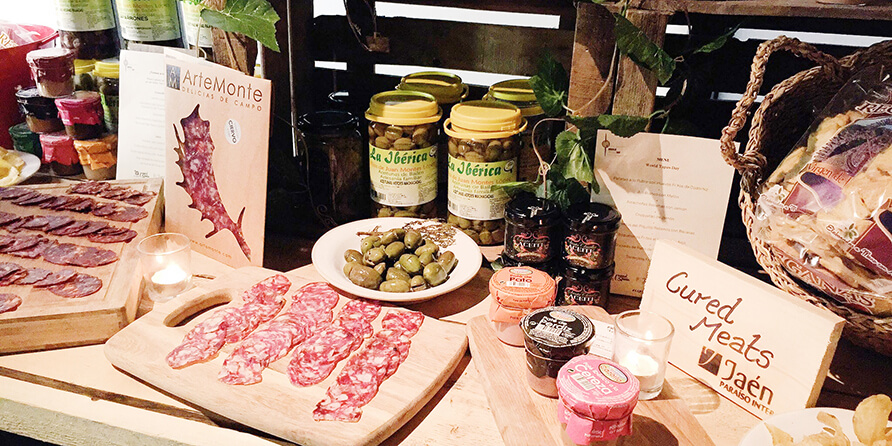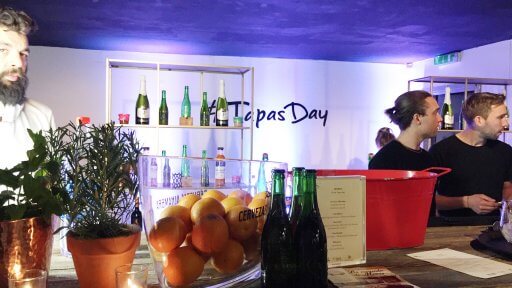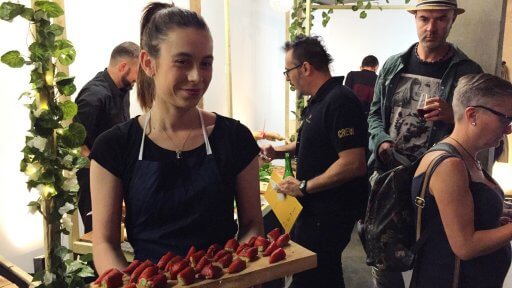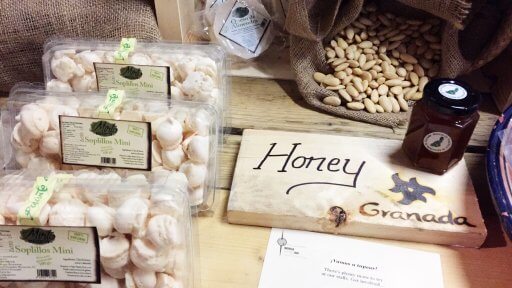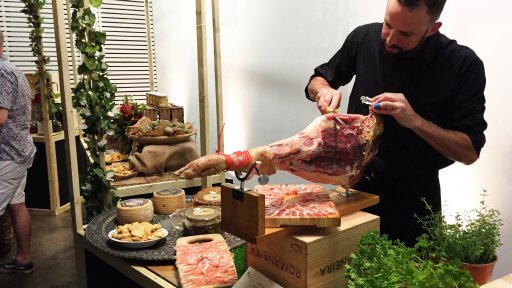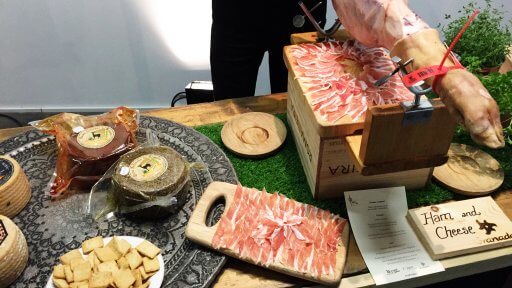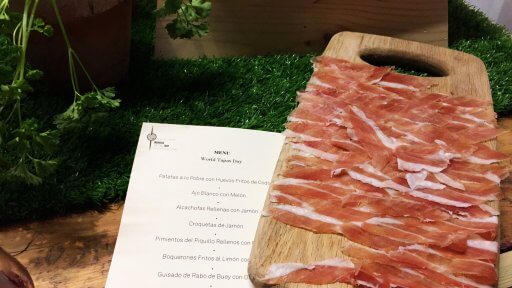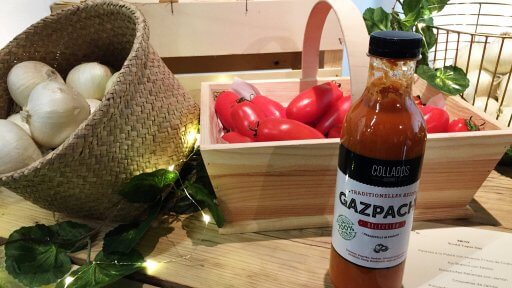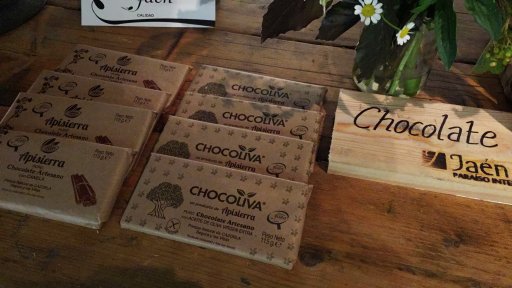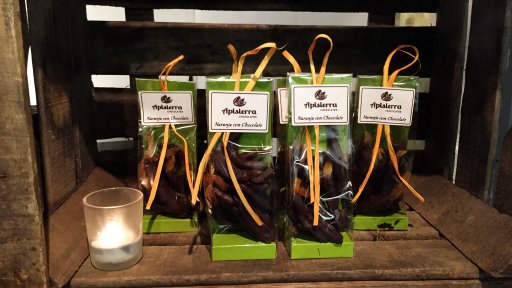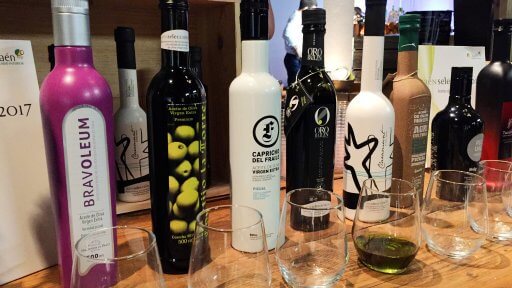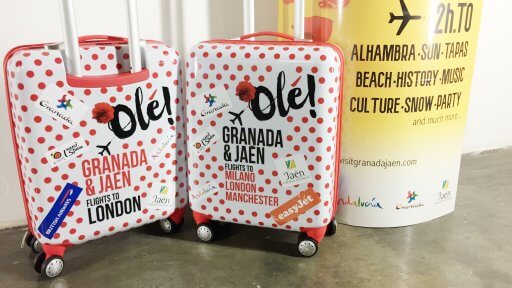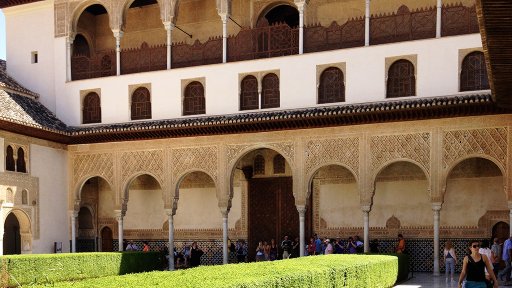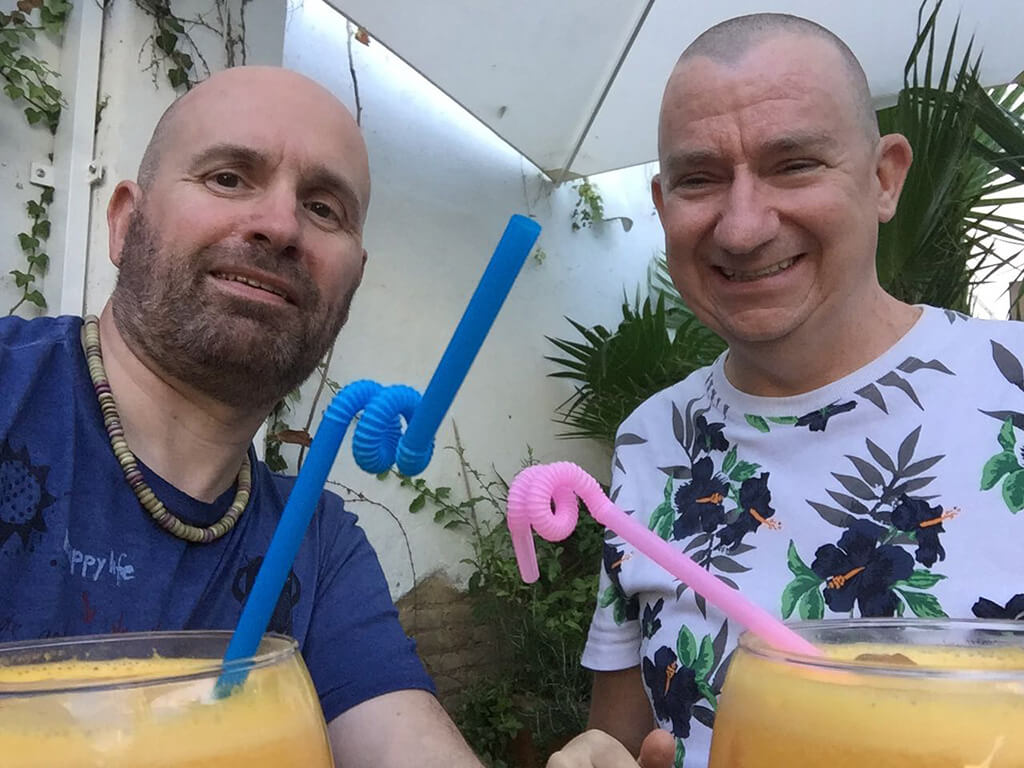Spain and Spanish speaking countries have a different relationship to food and drink to English speaking countries. In the UK and USA eating tends to be functional. In Hispanic countries, food is more of a social thing. Tapas plays an important part in the daily food and drink cycle of many Spanish lives. Tapas is synonymous with Spain, so Visit Spain declared the 3rd Thursday in June World Tapas Day as a way of celebrating them.
This year, Visit Spain organised a Fiesta de Tapas for the World Tapas Day celebrations in London. Held in conjunction with tourist boards for the Granada and Jaén regions, the event showcased the tapas from the area. We were lucky enough to get an invitation this fab event and the chance to try some wonderful Andalucian food.
So you think you know about tapas?
Many people who visit Spain head for a tapas restaurant and plough their way through a pile of Patatas Bravas and calamari rings. After washing it down with a jug of sangria, they leave content thinking that they’ve had a genuine Spanish dining experience and they know all about tapas. Unfortunately, they probably aren’t getting the best tapas and they don’t get the real point of eating tapas.
So, how did these wonderful dishes come into being? The word tapa literally means lid or cover. The food gets its name from the custom of innkeepers serving drinks with a slice of bread or ham on the top of the glass. However, as to why innkeepers started doing this, nobody knows for sure. There are probably as many tapas origin stories as there are regions in Spain.
Over time, tapas have evolved, incorporating new ingredients and styles. Today, all the regions of Spain have tapas dishes that reflect the local cuisine. Tapas competitions are held across Spain, with a national competition every November. Spanish people tapear (the act of eating tapas) as an appetiser before dinner or lunch. Although, after 3 or 4 tapas that sometimes ends up turning into dinner. Another Spanish way of enjoying tapas is to ir de tapa, which is basically bar hopping with a tapa and small drink at each stop.
London’s World Tapas Day party
The 2017 World Tapas Day party was held at Carousel London. We were among the first to arrive and were welcomed with chilled glasses of Tinto de Verano. A bit like sangria, but without the fruit and added spirits. In my opinion, this mixture of red wine with soda water is very refreshing. Chatting to the guys from Visit Spain, I discovered that Tinto de Verano is a popular drink amongst the Spanish. Sangria, on the other hand, is pretty much only drunk by tourists.
As a few more people arrived, they started to bring around the trays of tapas. After they started with the tapas, I can honestly say they didn’t stop. Things officially kicked off with a welcome from the Director of Tourism for Granada, who introduced the various people from the tourist offices. For the rest of the evening, they were around to answer our questions about Granada and Jaén.
Around the sides of the room, suppliers from the two regions had set up stalls, displaying their products. So, as well as the tapas that was brought out on the trays, we had a whole load of other goodies to try out.
Discovering Andalucian flavours on World Tapas Day
Granada and Jaén are part of the Autonomous Region of Andalucia. As with all the other regions of Spain, Andalucía has its own types of tapas. In our tapas making class, we had found out that Gazpacho was an Andalucian speciality.
It was interesting to see the variations on the recipe, ranging from the classic with just tomatoes to the exotic with mango. One of the guys from Turismo de Granada told me that as a child, he would drink big glasses of gazpacho every day after school as a way of cooling down. After trying chilled gazpacho on a hot day, I can see why.
The tapas were so good that it was hard to pick favourites. It was the first time I tried Ajoblanco, another delicious chilled soup, made with almonds and garlic. I hadn’t realised that fried fish like the Boquerones (anchovies) we were offered are also a tapa from the region.
On the stands, we tasted some gorgeous cakes and chocolate from the region. Also, there was also an olive oil tasting stand, but neither of us felt like downing a small glass of oil, so we skipped tasting it.
Walking the Olive Oil Route
Olive oil production is an important part of the Jaén economy. Jaén is referred to as the word’s olive oil capital and with good reason. The Jaén region produces around 40% of Spain’s olive oil. Furthermore, it accounts for about a fifth of the olive oil produced world-wide.
Jaén has begun to use its position as an olive oil producer to attract visitors. There are Oleo Tours, visiting olive groves and pressing plants. The Vía Verde del Aceite (The Olive Oil Greenway) runs through Jaén province. Opened in 2001, the Greenway is a cycle and walking route that runs along 55km of the disused Jaén-Campo Real railway. Stretching from Jaén to Alcaudete, the trail winds through a landscape dominated by olive groves.
Andalucía is already a popular holiday destination. Tourists have flocked to the Costa del Sol for years. However, as the way people spend their holidays has changed, food tourism has become more popular. The region has a rich culinary heritage. For this reason, Andalucía is in a good position to capitalise on the food tourism trend.
Granada is home to one of Andalusia’s best-known visitor attractions, The Alhambra. However, there’s more to the region than just that. It also boasts Europe’s most southerly ski resort, Sierra Nevada. It’s said that in Granada, you can ski in the morning, then drive to the beach for the afternoon.
Andalucía – somewhere for everyone
We’ve been to Andalucía several times. We have fond memories of driving through the beautiful countryside. Also, we spent a fantastic day wandering around the Alhambra. (On our second attempt – it was sold out for weeks ahead the first time we tried. Our tip – book well ahead if you want to go there).
One of my favourite holiday memories is of us sitting in a square in Antequera eating tapas and enjoying a caña. At that time neither of us spoke Spanish, though I knew the Spanish words for some meats. We’d listened politely as a little old lady, who spoke no English, passionately explained the menu to us in Spanish. Ordering was a stab in the dark, but the food that came out was fantastic. It was an experience that still makes us smile!
With some amazing coastline, a whole host of historic buildings, awesome scenery and fantastic food, Andalucía has something for everyone. There are daily flights from the UK to Granada and other Andalusian airports. As a result, you can get there easily from most parts of Britain. You can even fly to Granada from London City Airport which is our favourite London airport.
Going to the World Tapas Day party was a great opportunity to find out more about the Granada and Jaén regions. It was lovely to meet the people from Turismo de Granada and Turismo de Jaén too. Sharing the wonderful Andalusian tapas with them was a very special way to celebrate World Tapas Day 2017.

